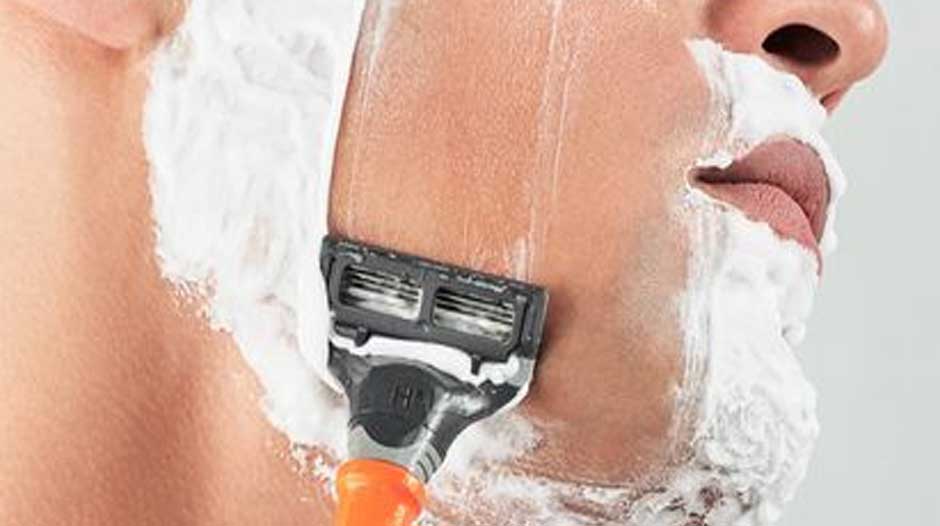Last updated on August 23rd, 2021 at 11:06 am
Chances are you are skimming through this article for a quick fix to your skin problems. Well, you are in the right place. However, it’s important to point out that reactions do not necessarily account for sensitive skin.
Some of the reactions may be as a result of underlying factors or poor shaving products or techniques. Be that as it may, there are genuine sensitive skin cases. For the purposes of this article will examine all the scenarios offer solutions.
Skin shaving doesn’t begin with the act itself. Dermatologists contend that shaving starts with skin maintenance since it lays the foundation for proper shaves. It is also worthy to mention that bodily hair also varies when it comes to sensitivity.
Here are some of the few clinically proven sensitive cases.
- Very dry skin.
- If your skin experiences, itchiness, not protecting the nerve endings of the skin and looks like a heat rush chances are you have very dry skin.
- Eczema
- This usually requires a clinical diagnosis of the condition and subsequent application of medication
- Ingrowing hairs
- Usually prevalent in curly hair. The hairs curl towards the skin with the sharp edge prodding the skin resulting in bumps.
- Skin reactions
- Mostly these are as a result application of the cream, oil, food intake that affects your skin an example is acne or pimples.
If you experience any of these then you have sensitive skin. Here are some of the tips on how to shave.
Stay Hydrated
Skin sensitivity may be attributed to overlooked factors like dehydration resulting to dry skin, open pores or mechanical abrasion of the skin surface. Before you shave to ensure that you are well hydrated.
Perhaps that can save you the pain and discomfort associated with sores, lumps, and rashes. Hydration makes your skin less dry and allows for the proper gliding of razor on your skin.
Hydration can also be achieved externally by taking a bath before or during shaving. Water softens hair makes it easy to cut off.
Moisturize Your Skin
If your skin is dry, then moisturization should be a mandatory routine. Invest in a good moisturizer (assuming you have visited a dermatologist); do not be swayed by marketing or scents. It is important to find a moisturizer that does not irritate your skin or react.
For instance, certain skin types have minor eruptions when using moisturizers that have alcohol, menthol or peppermint in them. Moisturizers serve to protect your nerve endings and excessive sebum formation.
Moisturization is also the final step after shaving that ensures your skin is not left dry and less prone to irritation. Natural moisturizers containing aloe vera are recommended. Experts warn against fragrance or alcohol-containing moisturizers due to the link to irritation after shaving.
Exfoliate
As the name suggests this process often helps rid dead skin cell from your skin surface. Dead skin usually traps hair follicles and ingrowths subsequently causing lumps. The rational is the razor glides smoothly on an exfoliated skin as opposed to one laden with dead skin.
If you have been shaving without getting rid of dead skin well this could just be the trick. However, people with sensitive skin are advised to exfoliate only once a week. Exfoliation can be done a day before or the D-day of shaving.
Lubricate Before Shaving
Shaving “unlubricated hair” can be a painful experience. There is no doubt that some of the cosmetic creams may cost an arm and a leg, but coconut oil could just cut it. The cream or oil provides a thin film on your air and skin surface allowing the razors to cut hair without making any cuts on the skin surface.
Apply the shaving cream and allow it to sit for a few minutes
If you lack a shaving cream use hair conditioner or body wash. However, bathing soaps may not offer the same results due to its tendency to result in irritations. Bathing soap dries faster on hair and the skin than conditioner or body wash which can make shaving difficult.
Matching hair type to the razor
Body hair varies, from the armpits, beard, legs, groin and head. Thus the type of razor used for the pubic area may not necessarily do it for the beards.
Here are some razor recommendation guides you should check out
- Best electric shaver for black men
- Best shavers for sensitive skin in 2021
- Best electric shaver for women’s pubic area in 2021
- Best electric shaver under $50 in 2021
Experts contend that curly hair requires straight blades as opposed to straight hair which needs three-blades. If you have sensitive skin a closer inspection of the hair types of various parts would dictate which blade to use for shaving.
The type of razor you opt for may be the cause of your skin problems. Depending on which body parts you want to shave blades have varied uses. Apart from the obvious sharp blade requirement here are a few tips to consider when selecting the perfect blade for your sensitive skin.
- If using a disposable razor, choose four or five-blade razors instead of single blade razors the latter drag a lot on the skin surface
- Disposable razors should be replaced after 5 to 7 shaves
- For reusable razors, change your blade after 5 to 10 shaves. Dull and/or old blades are more likely to cause bumps, redness, and contain bacteria.
- Try an electric razor or clippers if you are prone to ingrown hairs.
- Razors that have moisturizing strips help a lot especially those which contain Acai or Jojoba oil.
- Experts advise the use of safety razors for pubic hair. In part, this is due to the highly sensitive nature of the area.
Always Shave Along the Grain
Hairs when observed keenly seem to look pre-arranged.in grains. Before shaving it’s always wise to observe and follow the pattern. The golden rule of shaving is “Go with the grain”. Do not press the razor blade down maintain a good distance from the skin and follow the hair growth.
Rise your blade after each stroke and be gentle while shaving to avoid abrasions and tugging on hair blades. Most people tend t be counterproductive when pulling the skin tightly for a closer shave. Turns out this may just be the cause of your skin reactions.
Establishing the grain is a simple process. Run your fingers on your hair, the smoothest feel is the direction of the grains. Blades, therefore, glide in the direction of the least resistance. However, there is a general consensus that mustache hair grows downwards while the hairs of the neck grow downwards.
Take your time when shaving
This is self-explanatory. Rushing to shave is not only dangerous due to less attention or less efficient. Selecting the perfect uninterrupted time to shave is important. You are more likely to nick your skin in a hurry than when slow.
Shaving when you first wake up in the morning isn’t advisable since your skin is puffier at this time. It is recommended to wait between 20 to 30 minutes before you shave.
Clean Your Razor
You may have followed the rules of shaving, used clinically recommended products yet still suffer complications from shaving. Well, the answer may lie in an unlikely source. Blades by virtue of cutting through hair or shaving cream have a tendency to hold the dirt.
When blades aren’t properly cleaned they serve as a breeding ground for bacteria and dirt that end up clogging your pores. Considering there are usually mild cuts, the dirt may find itself to the grooves of the cuts.
Check this too: Which is better: Foil or Rotary shaver?
The body reacts to this grime leading to rashes, inflammations, and wounds. Ensure you clean your blades through running water and if possible a disinfectant to sterilize them. Keeping your blades dry helps avert this problem.
Rinse With Hot Water or Dab With a Hot Towel Before Shaving
Hot water opens the pores and improves circulation on the surface of the skin. If you don’t have time to jump into a hot shower, quickly immerse a towel in hot water and apply it to your skin surface. The opening of the pores not only softens hair but allows for easy shaving
Finish Your Shave With a Splash of Cold Water
After completing the shave, ensuring the pores get closed to prevent the buildup tiny hairs, dirt, and shaving cream; cleanse the surface of your skin then use cold water. The low temperature makes your pores close up by activating the body’s thermoregulation mechanism.
Use a Brush to Apply the Shaving Cream
Brushes are effective in the application of cream compared to fingers given the later are rarely sterilized. Badger brushes, for instance, lift your facial hair, they evenly apply cream and oil than hands would do.
Shave Less Often
Frequent shaving increases the probability of razor bumps and ingrowth. In part this can be attributed to the nicking and lack of adequate healing time before shaving. Let your hair grow for a while before shaving again to completely heal. If the skin problem persists a viable option is letting your hair grow for a while.
In case you still have skin complications despite adhering to these rules, a visit to a dermatologist would come in handy. However, it is important to seek a diagnosis of sensitive skin. Not all reactions are a result of your body reaction. Hypoallegerns and hydrocortisone creams also help when treating the reactions.
Check this too: Best Face Powder for Sensitive Skin

